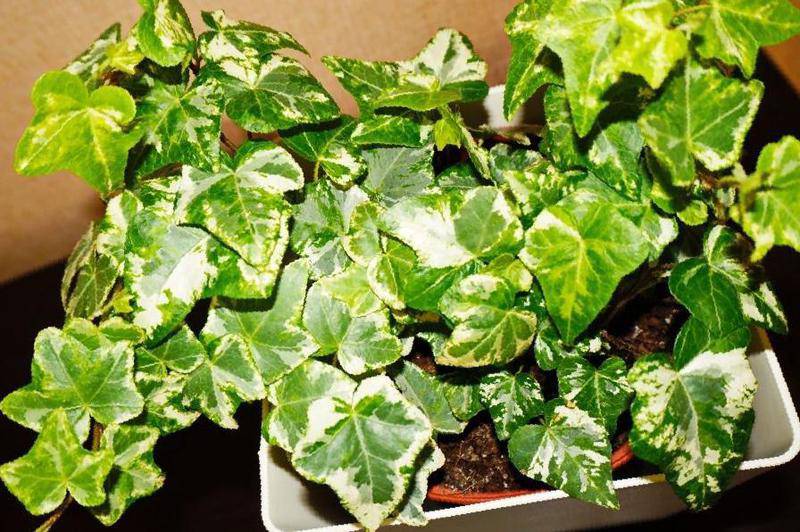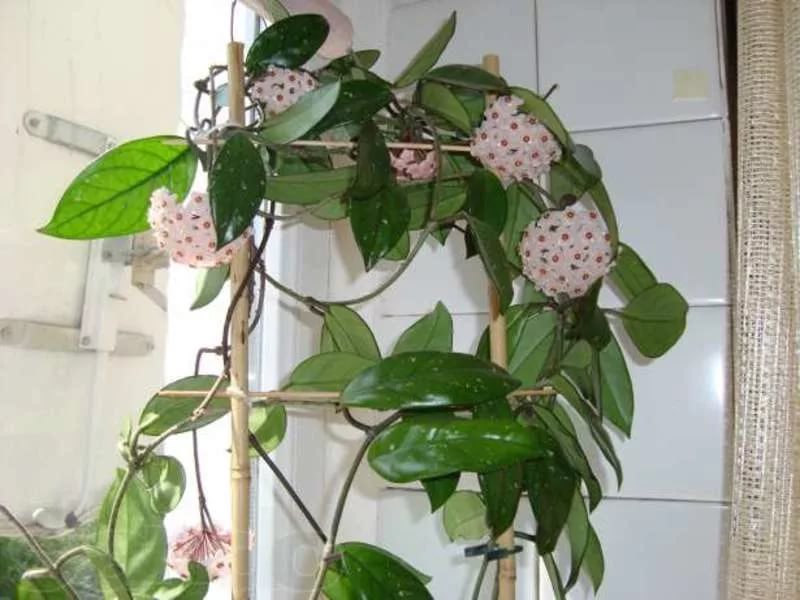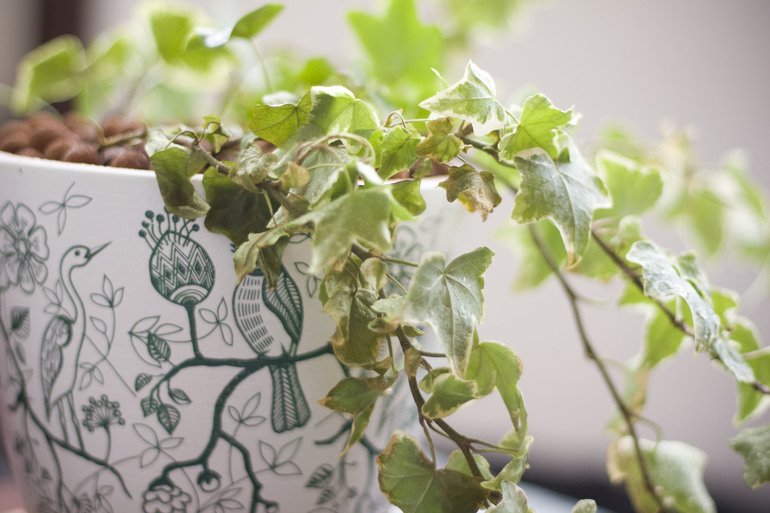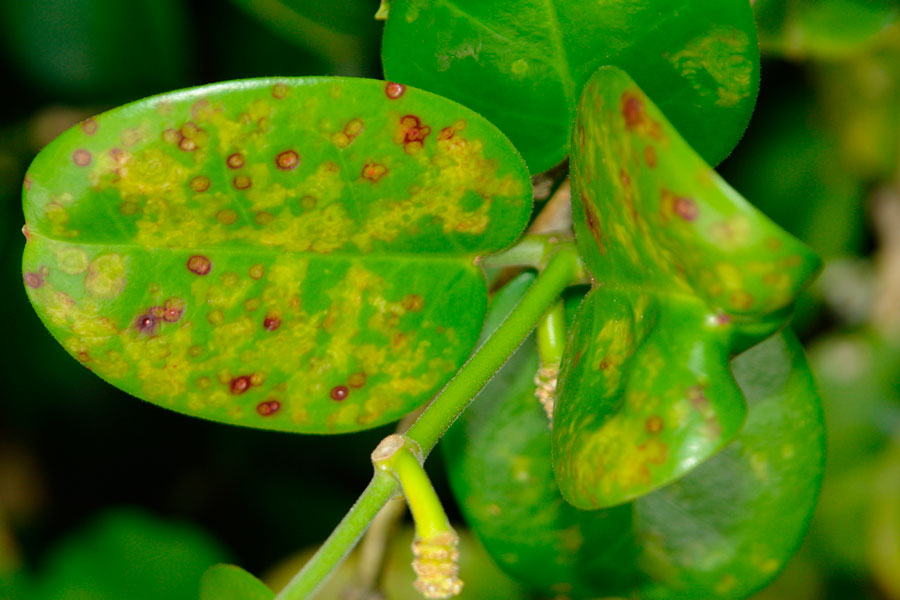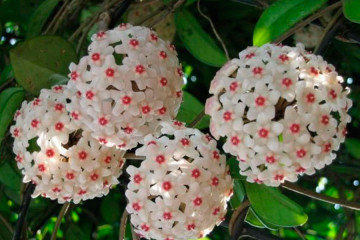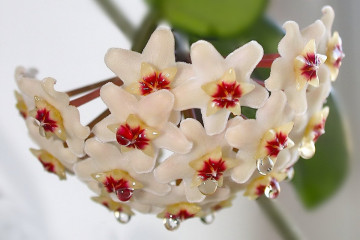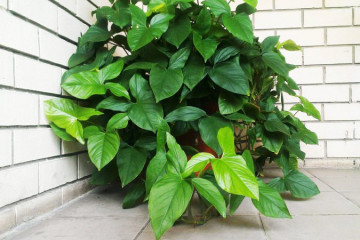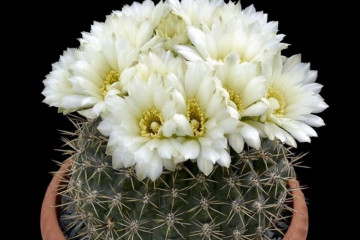Hedera helix mix or common ivy - home care
Content:
- Ivy or hedera helix mix: features of keeping at home
- Hedera - care and microclimate
- Choosing a location and the right lighting
- Watering and humidity
- Fertilizers and feeding
- Ivy Care Precautions
- How to care for
- Indoor ivy: diseases and pests
- Why do leaves dry
- How to grow ivy from seeds
- Plant propagation methods
- Reproduction
- Transplant and pruning
The Araliaceae family includes more than a dozen species of climbing plants growing in natural conditions up to 30 m. One of them is ivy (Hedera helix - lat.) - a shrub that clings to everything that surrounds it with the help of sucker roots.
Indoor ivy - caring for it at home does not require much effort and time-consuming, and the plant will decorate the interior of any room with lush greenery, both alone and in a flower arrangement.
Ivy or hedera helix mix: features of keeping at home
Novice florists often have a question: "Is it possible to grow ivy at home?" The people keep many unkind signs about the flower. Despite popular rumor about the content of ivy in the apartment, the most popular home types of heders are:
- canary;
- Colchian;
- English;
- heder;
- wax (hoya).
Florists' tips on how to care for ivy, given in the article, will help you take proper care of the plant.
Hedera - care and microclimate
Violation of the rules of cultivation will destroy the flower.
In the warm season, ivy is comfortable at home at a temperature of 19-22 ° C. The heat doesn't suit him. With the onset of summer, the plant is taken out to a loggia or balcony, where it is cooler.
Choosing a location and the right lighting
- Hedera needs a semi-shaded area. Sometimes a flower pot is placed even in the middle of the room, far from the windowsills.
- Despite the love of shading, ivy needs sunlight to grow in the house. Variegated species require more sun so that the foliage does not lose its attractiveness along with the bright color.
- If the heder is grown as an ampelous plant, then a wall that is well lit by the sun is chosen. The flower is difficult to tolerate the frequent change of location, it is advisable to immediately select a permanent place for it.
Watering and humidity
In the cold season, indoor ivy is watered once every 7 days, and in the warm season - twice a week. The flower is uncomfortable with insufficient humidity in the room.
Often, a pallet with water or wet expanded clay is placed under a flower pot.
Fertilizers and feeding
In the warm season, ivy is fed twice a month with liquid fertilizers for deciduous ornamental crops.
Ivy Care Precautions
When caring for a flower, it must be borne in mind that hedera is a poisonous plant.
- In allergy-prone people, contact with ivy leaves can cause severe reactions.
- In no case should you eat any part of the plant.
- When choosing a place for ivy, it is necessary to take into account not only lighting, but also such a factor as inaccessibility to children and pets.
Pet owners know how often cats eat the leaves of flowers. The availability of plant greenery will lead to poisoning and even death of the animal.
How to care for
When ivy blooms, florists advise removing flowers and fruits, since the berries are poisonous and extremely dangerous.
Indoor ivy: diseases and pests
A prerequisite for caring for the hedera helix mix at home is the treatment of diseases and protection from harmful insects.
Ivy diseases in an apartment from improper care:
- the plant dries up;
- foliage turns yellow, turns pale and falls;
- ivy leaves are small and sparse.
Why do leaves dry
There are several reasons:
- lack of moisture in the air;
- too hot in the room;
- attacked spider mites, aphids, scale insects;
- a natural process (as the flower grows, it sheds old leaves);
- lack of sunlight;
- the size of the pot is not suitable (too small).
How to help a flower?
- In ivy, the roots grow superficially, so the pot is needed not so much deep as wide.
- For lack of moisture, the cheder is sprayed and poured under the shower.
- The problem of lack of light is easy to solve if you put the flower pot in a more illuminated place. Also, from the heat, the plant is taken out into the cool.
Harmful insects grow on weak ivy that is not well cared for.
- One of the pests is a spider mite. Traces of his vital activity are visible on the white lace entangling the leaves, which then turn yellow and dry.
- The appearance of the scale insect is indicated by gray spots on the foliage on the inside. The growth of the plant stops, the leaves turn yellow and dry.
- From aphids, ivy withers, loses foliage.
If you do not take pest control measures, the plant will die in a short time (from spider mites in 15 days).
For pests, heder is sprayed and watered:
- Aktellik;
- Karbofos;
- Aktara.
The manufacturer's packaging indicates how to use the drug.
How to grow ivy from seeds
Growing heders from seeds is troublesome. Own seeds often do not ripen, and purchased ones come across without varietal characteristics.
- Seed material is soaked in growth stimulants: succinic acid and potassium or sodium humate. When applying, you must follow the instructions.
- In succinic acid (1 tablet per liter of water), the seed is soaked for about a day; in a solution of humate (a third of a teaspoon is diluted in 2 liters of water) - two.
- The seeds are dried and sown in a bowl, the bottom of which is covered with a drainage layer: expanded clay or broken brick.
- Pour the substrate, plant several seeds, observing an interval between them of at least 10 cm.The substrate is bought in a store or prepared independently from garden soil and river sand.
- Cover the bowl with foil or glass and put in a warm place. To maintain a stable microclimate, the seedlings are not opened even for irrigation, they moisten the crops from a pan with water, which is installed under the pot.
Plant propagation methods
Most often, flower growers use other methods for ivy propagation:
- cuttings;
- layering;
- shoots.
The easiest option is grafting.
Reproduction
Propagating ivy with stem cuttings is easy.
- The apical stalk is cut off (not shorter than 10 cm) and planted in nutrient soil, placing no more than 3 plants in one container.
- Watered, covered with foil or glass.
- Crops are constantly sprayed with warm water.
With the appearance of its own roots, ivy is transplanted into a bowl.
Sometimes the cut stalk is placed in a glass of water. After the roots grow back, the seedling is planted in a pot. When propagating by shoots, more than one rooted shoot is obtained. The cut shoot is rooted in a pot of soil. The regrowth of new leaves on the shoot after 20-30 days indicates that the roots have grown. The seedling is carefully taken out, divided. Each part with its own leaves and roots is planted in pots.
With the help of layering, street ivy is often propagated. The method is simple. One of the lashes is bent to the ground, a longitudinal line is cut on the stem, and ground is added. When the roots appear, the layers are separated from the main plant, planted separately.
Transplant and pruning
As ivy grows and develops, it must be replanted. The first time the plant is transplanted in a week and a half after purchase. The pot for transplanting should have drain holes for excess water, at the bottom - a drainage layer of expanded clay.
From the age of three, the cheder is transplanted every two years. After five years, the upper soil layer is changed. The transplant is carried out in the warm season (from spring to autumn). Regular pruning of ivy is a prerequisite for caring for the plant. Cut off the shoots that have thrown off the leaves, old and sick, leaving at least two buds. Young ones will grow out of them.
Pruning promotes the growth of a lush crown, improves the decorative characteristics of the heder. Despite the unkind popular rumor, many flower growers grow heder in the house. Ornamental plant is not inferior to most home flowers, and indoor ivy care is minimal.
